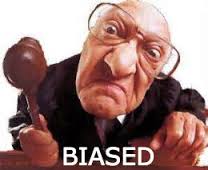Non Binding (Precatory) words in a will were found not to create a trust that was legally binding on the trustee, but instead that the words were non binding ( precatory) and thus only morally binding an thus an outright bequest.
Killam v Killam 2017 BCSC 175 contains an exhaustive review of the rules of construction in deciding whether the following provision of a will creates a trust that is legally binding to use for the bequest for the health, support and maintenance” of the beneficiary, or whether the words “ it is my desire but I do not direct “are merely morally binding ( precatory) and not legally binding:
The provision in dispute is worded differently than those concerning the other relatives. It reads:
Provided HUMPHREY HUBBARD KILLAM should survive me, then in such event I give and bequeath ONE (1) SHARE to EUGENE HUMPHREY KILLAM, provided, should he predecease me, then to LAWRENCE HEBB KILLAM. It is my desire, however, I do not direct, that said share shall be used for the health, support and maintenance of HUMPHREY HUBBARD KILLAM, for as long as he should live or as long as said funds are available for such purpose.
After an exhaustive review of the rules of construction of the court concluded that the words do not form a trust for the beneficiary and instead is an outright bequest.
Precatory Language
63 Professor Waters, in his authoritative work, Waters’ Law of Trusts in Canada, 4th ed. (Toronto, Ont.: Carswell, 2012), provides an interesting historical context to what some have referred to as “precatory trusts”. He notes, first of all, that the prime question of whether a trust has been created is still one of construction (at 145):
The question which gives rise to most litigation is whether a testator intends to create a trust, or merely impose some kind of moral obligation upon the legatee when he bequeaths personalty or devises land in confidence that the legatee will use the property in certain ways. He may speak, for instance, of his “expectation”, “fervent wish”, “desire”, “firm belief” or “purpose” that this will be done. Such words may give rise to what has been called “a precatory trust”, though, as Rigby L.J. pointed out in the English Court of Appeal, and his words have been echoed in Canada, this title is awkward and incorrect; “a misleading nickname”. If language, once construed, is held to intend a trust, then whether the language is precatory or otherwise, the trust which is thereby set up is the same as any other express trust, and no different rules apply.
64 There was a profound shift in the judicial approach to these sorts of cases starting in the nineteenth century, caused by an English statutory change (at 145 – 147):
Prior to the latter half of the nineteenth century the courts bent over backwards to find that testamentary language of a precatory kind revealed the intention to transfer on trust. By imposing a binding obligation upon the recipient of the property, the wishes of the testator were held to be safeguarded, concerning those who were to benefit from his property. Moreover, before 1830, the executor in English law took the residue of the estate beneficially, if it were not otherwise disposed of; and where it was incumbent upon the executor to respect only the wishes, hopes, desires, and belief of the testator that others would be benefited, the temptation of the executor to ignore those moral obligations was considerable. Then, in 1830, that right of the executor was statutorily taken away, and thereafter, the pace picking up after 1870, the courts became gradually less inclined to discover trust intention in mere precatory words. It is generally agreed that the climate of judicial attitude changed noticeably with the case of Lambe v. Eames and Canadian courts have joined in this new attitude. In 1889, in Bank of Montreal v. Bower, Chancellor Boyd of the Ontario High Court Chancery Division stated:
It would be an otiose undertaking to go through all the cases, for they are numerous, and cannot be reconciled. But since Lambe v. Eames . . . . there has been a new departure in favour of confining language supposed to create a trust for the children [of the testator and the widow] within much narrower limits, than in some of the earlier cases. If the entire interest in the subject of the gift is given with superadded words expressing the nature of the gift, or the confident expectation that the subject will be applied for the benefit of particular persons, but without . . . terms cutting down the interest before given, it will not now be held . . . that a trust has been thereby created.
And in Johnson v. Farney, Meredith C.J.O. adopted the view of Cozens-Hardy M.R. in the leading English case of Re Atkinson that every care has to be taken not to make mandatory words from those which are the mere indication of a wish or request, and that to construe the true intention of the testator, the courts must examine the trust instrument as a whole and not be mesmerised by particular words. Earlier, in Renehan v. Malone, this same view had been expressed by Barker J. On many occasions, Trench v. Hamilton has been approved in Canadian courts. In that case, Lindley L.J. pointed out that the meaning which a court derives must prevail even if judges in the past have drawn different conclusions from more or less similar language.
65 Professor Waters concludes as follows (at 147):
Whether a trust has been created is simply a matter of construction; this principle has not changed. What has changed is the tendency found in the earlier cases to discover imperative meaning in various word formulae, like “wish and direction” or “trusting that” and expressions of that nature.







 Semenoff Estate v Semenoff
Semenoff Estate v Semenoff 

